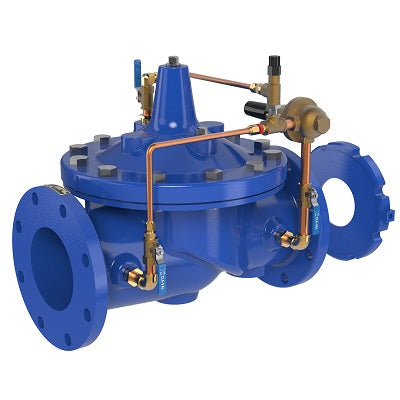
Maximize Energy Savings and Convenience With Advanced Structure Automation Controls
In the realm of modern-day architecture and facility management, the combination of innovative building automation controls stands as a pivotal improvement. By using the power of automation, structures can adjust, respond, and advance in methods that were when inconceivable.
Energy Effectiveness Benefits
Energy effectiveness advantages can substantially minimize power consumption and operational costs in structures. By applying energy-efficient methods and innovations, structure proprietors and drivers can attain substantial savings while likewise contributing to environmental sustainability. Among the key advantages of improving energy efficiency in buildings is the reduction of utility bills. Energy-efficient systems, such as sophisticated structure automation controls, can enhance the usage of sources like cooling, illumination, and home heating, bring about reduced power expenses gradually.
In addition, improved energy performance can extend the lifespan of structure devices and systems. By operating extra effectively, a/c systems, light, and various other building elements experience much less deterioration, causing minimized maintenance and substitute expenses. Additionally, energy-efficient structures frequently regulate greater residential or commercial property worths and rental prices, giving lasting financial advantages to proprietors.
Moreover, power performance can enhance passenger convenience and productivity. Appropriately controlled indoor settings with optimum lights and thermal problems develop a more positive and favorable workspace, bring about boosted worker fulfillment and performance. Generally, the power performance benefits associated with advanced building automation controls are multifaceted, encompassing price financial savings, ecological stewardship, and owner wellness.
Enhanced Comfort Control
Enhancing convenience control in building environments calls for a sophisticated assimilation of advanced automation systems for optimum resident wellness. By utilizing innovative building automation controls, facilities can customize the indoor environment to fulfill the certain needs and choices of occupants. control valves.
Improved comfort control goes beyond fundamental temperature adjustments. It consists of attributes such as tailored setups, occupancy sensing units, and all-natural light utilization to create a receptive and vibrant environment. By integrating these innovative controls, buildings can not only boost comfort however also boost power performance by optimizing system operations based on real occupancy and usage patterns. Ultimately, focusing on resident comfort with sophisticated automation systems results in a much more satisfying and healthier interior environment.
Operational Efficiency Improvements

In addition, the application of real-time tracking and analytics devices allows structure operators to identify power ineffectiveness and operational abnormalities promptly. By continually keeping track of power usage patterns and system efficiency metrics, adjustments can be made in real-time to optimize power usage and guarantee peak operational effectiveness. control valves. Additionally, including need action strategies into structure automation controls can even more boost operational performance by dynamically that site changing energy use based upon grid conditions and pricing signals
Indoor Environment Optimization
Reliable interior environment optimization is a basic element of structure automation controls, making sure occupants' convenience and well-being while making best use of energy savings. By making use of innovative sensors and controls, building automation systems can continually adjust and monitor temperature level, moisture degrees, air top quality, and ventilation to produce an ideal interior environment. Preserving constant and comfortable conditions not only enhances owner fulfillment however likewise increases performance and total health.
Indoor environment optimization additionally plays an important role in power performance. By fine-tuning heating, air flow, and cooling systems based on real-time data and tenancy patterns, constructing automation controls can considerably lower energy consumption - control valves. For example, applying approaches such as demand-controlled air flow and thermal zoning can aid decrease energy waste while guaranteeing that each area of the structure obtains the required conditioning.

Sustainable Setting Development
Structure automation manages not only enhance interior environment problems for power effectiveness and passenger comfort yet additionally lay the foundation for creating a lasting environment with strategic monitoring of systems and sources. By incorporating advanced structure automation modern technologies, such as sensing units, actuators, and smart software program, facilities can readjust and check power use in real-time to minimize waste and decrease their carbon impact. These systems make it Visit Your URL possible for predictive upkeep, identifying possible problems prior to they intensify and enhancing equipment performance to improve longevity and efficiency.
In addition, sustainable environment creation extends beyond energy monitoring to incorporate water preservation, waste decrease, and interior air quality improvement. Building automation controls can regulate water use, detect leakages, and make sure correct garbage disposal techniques, adding to overall sustainability efforts. In addition, by keeping an eye on and controlling ventilation and purification systems, these innovations boost occupant health and wellness and efficiency while lowering energy usage connected with a/c procedures.
Conclusion
Finally, progressed building automation manages deal substantial benefits in terms of power savings, convenience control, operational performance, indoor climate optimization, and producing a lasting setting. By implementing these controls, buildings can accomplish optimum efficiency while decreasing power consumption and enhancing owner convenience. It appears that making use of sophisticated automation innovation is critical in boosting structure efficiency and creating a more lasting future.
Power performance advantages can considerably decrease power usage and operational expenses in buildings. In general, the energy efficiency benefits associated with advanced building automation straight from the source controls are complex, incorporating price savings, ecological stewardship, and passenger health.
Furthermore, including need response techniques right into building automation controls can better boost operational effectiveness by dynamically readjusting power use based on grid problems and prices signals.
Building automation regulates not just optimize interior climate problems for energy efficiency and owner convenience but also lay the foundation for developing a sustainable environment with tactical monitoring of systems and resources.In conclusion, progressed structure automation manages deal considerable benefits in terms of power savings, comfort control, operational performance, indoor climate optimization, and producing a sustainable setting.
Comments on “Recognizing the Relevance of Control Valves in Process Automation”